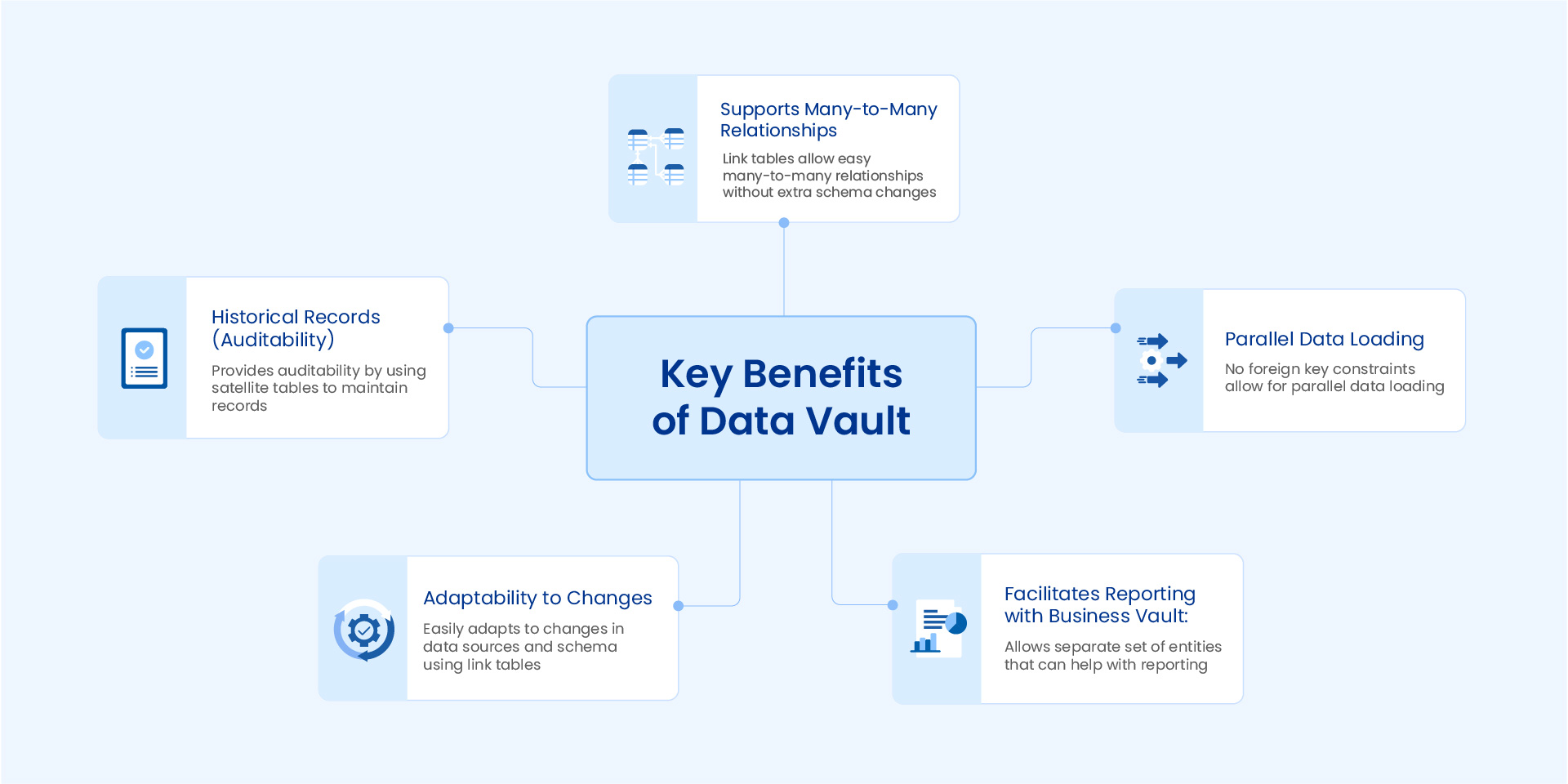
Do You Really Need a Data Vault?
Data Vault 2.0 modeling methodology has gained immense popularity since its launch in 2013. It’s a hybrid model that combines the benefits of Third Normal Form (3NF) and star schema architectures, making it a dream solution for data warehousing engineers.
But is it worth implementing for your data warehouse architecture? The answer isn’t straightforward, as there are many factors to consider. So, let’s dive in and explore whether Data Vault 2.0 is right for you.
When should you implement a data vault?
The data vault architecture is meant to be complementary to the star schema methodology of modeling your data warehouse. It acts as an additional layer between your staging and reporting layers.
3NF and star schema are great stand-alone architectures, but both have their pros and cons. A 3NF model provides reduced data redundancy and requires less storage space but can be difficult to query because of the large number of tables. A star schema is optimized for faster query performance and history maintenance but can be complex and time-consuming.
That’s where the data vault comes into play.

The biggest advantage of having a data vault in place is its adaptability to change. If your source architecture is prone to changes, such as the addition or deletion of columns, new tables, or new/altered relationships, you should definitely implement a data vault.
A 3NF model has high entity dependencies, given that entities are correlated. Whenever something new is added, or a change is made to the model, you must alter existing relationship links, which may cause referential integrity issues. In contrast, a data vault model contains independent link tables signifying the links between tables. You could easily incorporate changes, such as adding new sources to the architecture or altering the existing schema, by adding new link tables to the model.
An added benefit of these link tables is their ability to cater to many-to-many relationships. In a 3NF model, you would have to create a bridge table to maintain this sort of relationship, but link tables have the inherent ability to do that. No schema changes would be required even when you change a relationship from one-to-many to many-to-many.
Furthermore, data vaults provide auditability by using satellite tables to maintain historical records of changes made in the source data. In dimensional modeling terms, SCD type 2 is essentially applied to each field, ensuring that history is maintained. This way, you can track all sorts of changes taking place in the data. Moreover, the satellite table also contains record time and source fields, facilitating comprehensive auditing.
A data vault architecture enables parallel loading, as no lookups are required—unlike a dimensional model that requires a dimension lookup to get the active surrogate key for a fact. Moreover, there are no foreign key constraints; Hash keys can be easily calculated using the business keys in the staging layer, nullifying the need for a lookup and making it possible to populate and maintain multiple tables in parallel. Top marks for efficiency!
So far, we have only talked about the raw vault – and it is evident that its implementation has huge advantages. On the other hand, the business vault provides a separate set of entities, such as point-in-time and bridge tables, that can be used as a leeway toward the reporting layer (star schema) or accessed directly for reporting.
The combination of the raw vault and business vault can serve as powerful instruments in a data warehouse architect’s toolkit. But are they an essential part of your data warehouse development lifecycle? Mm, not exactly!
When is it overkill?
Let’s take a scenario where you have an ERP source system that contains ten years of data that you want to load into a data warehouse and use for reporting. No changes are expected to the architecture or the data itself; your only goal is to gain insights from the information at hand.
In such a situation, adaptability is not a requirement since no changes are expected in the architecture – there’s no need to add new relationships, fields, or tables. Moreover, you wouldn’t need to audit data that is not expecting any updates from the source(s).
Designing a raw vault can be a tedious and time-consuming task. If your only goal is to generate reports from your data, why go through the trouble? You could go straight from the staging database to a star schema, arguably the best reporting choice.
Conclusion
Now that we’ve discussed all of the factors to be considered, here’s a conclusion:
Implementing a data vault is optional and depends entirely on your data landscape and requirements. If you’re looking for an auditable and adaptable architecture, designing a raw vault on top of your staging layer makes sense. You could then create a business vault to enable meaningful reporting directly from the vault or through a complementary reporting layer, such as a star schema.
However, if you have static data sources and your primary requirement is to gain insights from your data, designing a data vault would be a waste of time. In short, if adaptability and auditability are not required, there’s no use in having a data vault between your staging and reporting layers.
If you fall under the category of data engineers who need a data vault as part of their ecosystem, keep in mind that creating hubs, links, satellites, bridges, and point-in-time tables—to name some of the many components of the raw and business vaults—can become highly technical and would require hardcore programming knowledge. But fear not; there’s an easy way out!
Astera DW Builder provides a data model designer with a visual interface, including drag-and-drop and click-and-point capabilities, for you to design a data vault with minimal effort. Moreover, the automation ability of the tool will allow you to derive a data vault schema from a source data model with just a couple of clicks. Simply put, it doesn’t get any easier than that.
Discover the best way to implement a data vault. Reach us at sales@astera.com today!
 Astera AI Agent Builder - First Look Coming Soon!
Astera AI Agent Builder - First Look Coming Soon!
